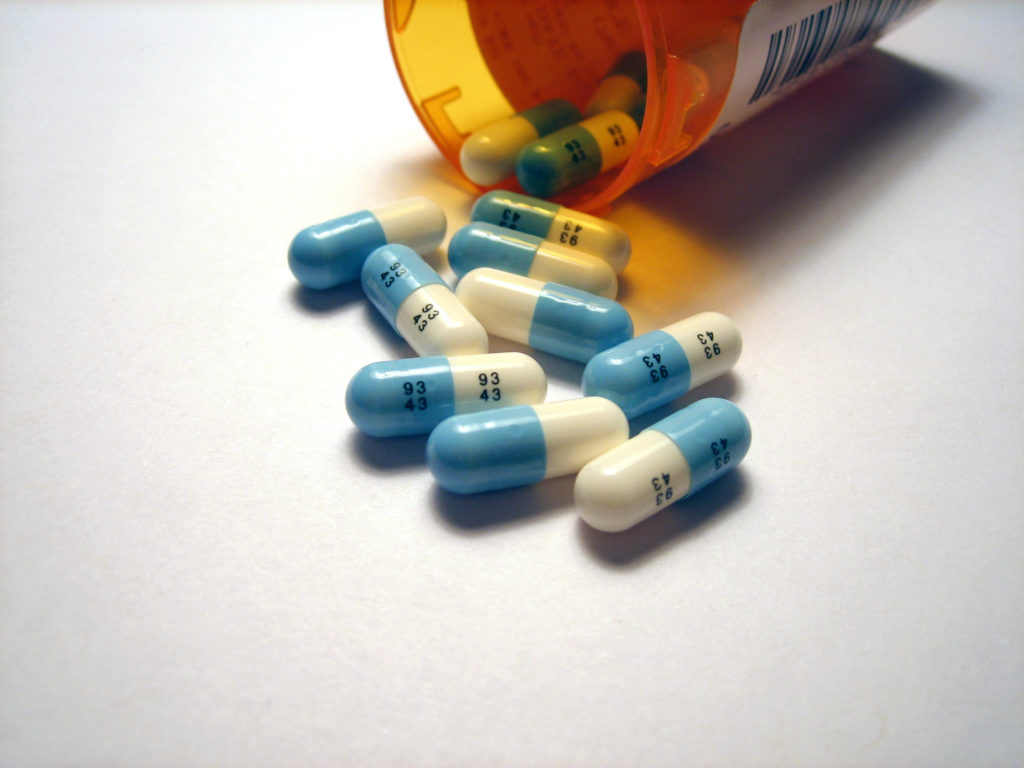
The relationship between Serotonin Selective Reuptake Inhibitors (SSRIs) and suicidality is much debated. Discussion in the literature dates back as far as 1990 (Teicher MH et al, 1990); indeed, concerns regarding general antidepressant use and suicidality were even raised a decade earlier (Feuerstein TJ and Jackisch R, 1980).
A recent meta-analysis in the Lancet (Cipriani A et al., 2018) concluded that 21 antidepressants, including all commonly prescribed SSRIs, were more efficacious than placebo in the treatment of depression. The allied issue of SSRI use and its potential relationship with suicidality, remains a controversial topic with seemingly conflicting evidence.
The issue has at times garnered significant media attention, often framed by quite dramatic headlines. “Depression pills ‘double risk of suicide in young adults’” was one such headline quoted in a British daily newspaper in response to a paper published in the BMJ examining the association (Stone M et al., 2009).
Further scrutiny of the research to date suggests that the effects of SSRIs on suicide might vary between age groups, with increased risk in younger people and protective effects in older age groups. Indeed the Food and Drug Administration (FDA) and European Medicines Agency require a “black box warning” on all SSRIs due to concerns of increased suicidal ideation in children and adolescents.
A new mega-analysis published in the British Journal of Psychiatry (Nasland et al., 2018) seeks to provide further clarity on this important issue by examining the effects of the commonly prescribed SSRIs, Citalopram, Sertraline and Paroxetine, on suicidal ideation in those aged 18 and over compared with placebo.

The issue of SSRI use and suicide remains a controversial topic.
Methods
The authors included studies of adults diagnosed with depression who had participated in all FDA-registered, industry-sponsored placebo controlled trials that used the Hamilton Rating Scale for Depression (HRSD). This resulted in a total study group of 7,725.
Of these 7,725 patients, 5,681 individuals had been treated with an SSRI and were compared with 2,581 people treated with a placebo.
The study compared differences between the groups by using the suicidality rating on the HRSD. This item is rated from zero to four (0 = absent; 1 = life not worth living; 2 = wishes he/she were dead or thoughts of death; 3 = suicide ideas or gesture; 4 = suicide attempt). Weekly ratings in the suicidality item of the HRSD from baseline to six weeks were analysed.
The authors conducted separate analysis for those aged 18-24 years and those aged 25 years and above.
Three categories of increasing suicidality were defined based on the HRSD suicidality item score:
- General “worsening” (any increase in rating)
- “Emergent suicidality: loose definition” (an increase from 0-1 score at baseline to 2-4 during treatment)
- “Emergent suicidality: strict definition” (an increase from 0-1 score at baseline to 3-4 during treatment).
Separate analyses were conducted for the early phase of treatment (weeks 1-2) and the latter phase of treatment (weeks 3-6).
Results
Overall age differences
For those aged 25 and above, the mean rating of suicidality in the HRSD was significantly lower in those taking SSRIs than those given placebo. This difference was present from week one and persisted throughout the six-week treatment period.
For those aged 18-24, the mean rating of suicidal behaviour was significantly lower in those taking SSRIs in week one compared with placebo. In the remaining weeks there was no difference in the HRSD suicidality score between the SSRI and placebo groups.
Comparing three groups of worsening suicidal ideation
In the analysis of the three categories that the authors defined, in those aged 25 and above the risk was lower in the “worsening suicidality” and “emergent suicidality: loose definition” categories in those prescribed an SSRI over those prescribed a placebo. There was no significant difference in the “emergent suicide: strict definition” category. In the 18-24 age group there were no significant differences between SSRIs and placebo in any of these three categories of increasing suicidality.
Early versus late phase of treatment
In the comparison of suicidality between the SSRI and placebo groups in the two phases of treatment (1-2 weeks and 3-6 weeks), those aged 25 and above treated with an SSRI were less likely to report “worsening suicidality” or “emergent suicidality: loose definition” versus placebo in both phases. There was however no difference between SSRI and placebo when “emergent suicidality: strict definition” was applied.
In the 18-24 group, there were no significant differences between SSRI and placebo in the two treatment phases in any of the three defined categories of increasing suicidality with one exception: placebo favoured SSRI in the 3-6 week treatment phase when the “emergent suicidality: loose definition” was applied.

The net effects of SSRIs on suicidality appear beneficial in people aged 25 and over, and neutral in those aged 18-24.
Conclusions
Compared with placebo, SSRIs reduced HRSD suicidality scores in those aged 25 and over and this effect was observed from as early as week one of treatment.
In the 18-24 age group there was no net effect on the HRSD suicidality scores.
Strengths and limitations
The authors aggregated a large cohort for their mega-analysis and the methodology was robust. While the use of the HRSD suicidality rating may not necessarily be ideal for measuring likelihood of suicide, it does circumvent some of the issues of retrospectively examining completed suicides, which are tragic but relatively rare events, with multiple confounding factors.
In view of previous reports suggesting that SSRI-induced suicidality is at its highest after the onset of treatment, the authors usefully compare differences between SSRI and placebo at early and later stages of treatment. Additionally, acknowledging previous research findings suggesting increased suicide-potentiating effects of SSRI in younger age groups, the authors helpfully split the study population into those aged 18-24 and those aged over 25.
An obvious limitation of the study is that no conclusions can be made regarding children and adolescents given that only those aged 18 and over are included. Indeed the vast majority of participants were aged 25 and over, which also raises the issue of the study being less powered to make distinctions between the SSRI and placebo groups in those aged 18-24.
A further limitation, and one which the authors acknowledge, is the issue that participants with marked suicidality at baseline are usually excluded from participating in placebo-controlled trials; indeed, the authors report that less than 6% of participants in the study had a HRSD item three score of 3 or 4. Questions therefore remain regarding SSRI use and its effects on suicidality in those displaying marked suicidal tendencies at the start of treatment.
A final observation is that while there may be no overall effect on suicidality when comparing SSRI use and suicidality in the 18-24 year-olds, and a protective effect in the 25 year and over age group, these results do not exclude the possibility of SSRIs causing a paradoxical increase in suicidality in a small number of individuals: such an effect could be masked by the overall effect size.

The vast majority of participants in this study were aged 25 or over, so the review is less powered to make distinctions between the SSRI and placebo groups in those aged 18-24.
Implications for practice
This paper provides a valuable extension of the literature examining antidepressant use and suicide. The study reports that SSRIs confer a protective effect for suicidality in those aged 25 and over. Interestingly in this age group SSRIs were found to significantly reduce the HRSD suicidality rating from as early as the first week of treatment. In the 18-24 age group the outcome appears neutral in that overall there was no difference in the HRSD suicidality score between the SSRI and placebo groups.
It is worth noting that this paper echoes the findings of previous studies of two other active serotinergic drugs: fluoxetine and venlafaxine (Gibbons RD et al, 2012).
Although clinicians should be mindful of cases, particularly in young people, where SSRIs may have a paradoxical effect on suicidality, this should not detract from the evidence that not using antidepressants for moderate to severe depression is likely to promote a greater risk. For healthcare professionals, frequent monitoring of suicidality, especially early in a new treatment course is key.
Taken in conjunction with the recently published Lancet meta-analysis on antidepressant efficacy and acceptability (Cipriani et al, 2018), this paper supports the conclusion that SSRIs remain a safe and effective treatment in depression for those aged 18 and over.

This paper supports the conclusion that SSRIs remain a safe and effective treatment in depression for those aged 18 and over.
Conflicts of interest
None.
Links
Primary paper
Näslund J, Hieronymus F, Lisinski A, Nilsson S, Eriksson E. (2018) Effects of selective serotonin reuptake inhibitors on rating-scale-assessed suicidality in adults with depression. The British Journal of Psychiatry (2017) 0, 1–7. doi: 10.1192/bjp.2017.24
Other references
Cipriani A, Furukawa TA, Salanti G, Chaimani A, Atkinson LZ, Ogawa Y, Leucht S, Ruhe HG, Turner EH, Higgins JPT, Egger M, Takeshima N, Hayasaka Y, Imai H, Shinohara K, Tajika A, Ioannidis JPA, Geddes JR. Comparative efficacy and acceptability of 21 antidepressant drugs for the acute treatment of adults with major depressive disorder: a systematic review and network meta-analysis. The Lancet. Published online February 21, 2018 http://dx.doi.org/10.1016/So140-6736(17)32802-7
Feuerstein TJ, Jackisch R. (1986) Why do some antidepressants promote suicide? (letter). Psychopharmacology (Berlin). 1986; 90: 422
Gibbons RD, Brown CH, Hur K, Davis JM, Mann JJ. (2012) Suicidal thoughts and behavior with antidepressant treatment: reanalysis of the randomized placebo-controlled studies of fluoxetine and venlafaxine. Archives Gen Psychiatry. 2012; 69: 580–7
Stone M, Laughren T, Jones ML, Levenson M, Holland PC, Hughes A, Hammad TA, Temple R, Rochester G. (2009) Risk of suicidality in clinical trials of antidepressants in adults: analysis of proprietary data submitted to US Food and Drug Administration. British Medical Journal. 2009 Aug 11;339:b2880. doi: 10.1136/bmj.b2880.
Teicher MH, Glod C, Cole JO. (1990) Emergence of intense suicidal preoccupation during fluoxetine treatment. American Journal of Psychiatry. 1990 Feb;147(2):207-10. [PubMed abstract]
Photo credits
- Photo by Sam Austin on Unsplash
- By Tom Varco (Own work) [CC BY-SA 3.0], via Wikimedia Commons
- Photo by Patrick Tomasso on Unsplash

Do the authors of this study know how many suicides (over the age of 30) occurred in paroxetine clinical trials?
[…] a follow on from the study published last week about the effectiveness of antidepressants, this link explains the findings of a large scale study about the safety of antidepressants, specifically […]
[…] SSRIs and suicidality: effects of SSRIs on rating-scale-assessed suicidality in adults with depressi… […]